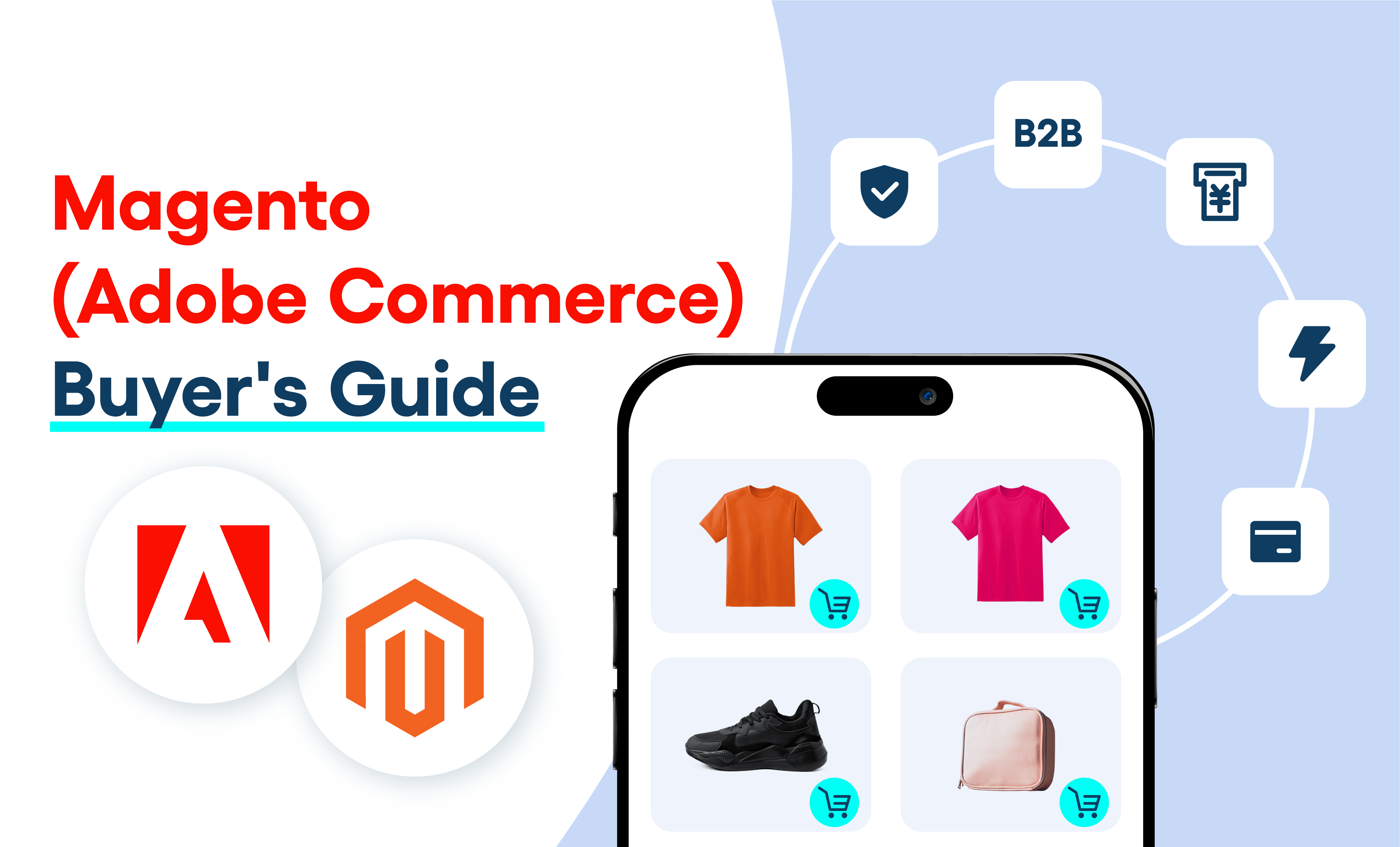Let's face it: Your eCommerce is not broken, but it’s not fast, either.
Maybe you’ve run it through PageSpeed or GTmetrix and gotten a red flag. Maybe bounce rates are creeping up on mobile, or conversions have dipped even though traffic is stable. You’ve tested headlines, tweaked product descriptions, and adjusted promotions, but nothing seems to stick.
The truth is, eCommerce performance degrades quietly over time: more products, more apps, more tracking scripts, and more marketing campaigns layered on top of aging theme code. It doesn’t happen all at once, but surely and gradually, your storefront slows down, especially without proper maintenance. And when performance drops, so does your revenue potential.
At TMO, we help brands overcome challenges like these with scalable eCommerce solutions on Magento, Shopify Plus, and beyond. Explore our services.
If you already suspect your site isn’t keeping up and want clarity before making technical changes, launching a rebuild, or bringing in outside help, this article will unpack where performance issues usually hide on eCommerce platforms, why they’re so hard to spot, and what to look at first when speed is starting to hurt your bottom line.
1. Website Speed Isn't Cosmetic; It's Commercial
Site performance directly impacts how your business makes money: research shows that just a one-second delay in page load time can reduce retail conversion rates by 7% to 20%! and the effect is even more pronounced on mobile. Beyond conversions, speed also affects:
- SEO rankings: Core Web Vitals are now a direct Google ranking factor
- Customer experience: Frustrated shoppers don’t wait—they leave
- Marketing ROI: Slow load times sabotage campaign performance, increasing your cost-per-click and lowering your return on ad spend
While you may not even feel it internally, speed creates separation, especially when you're competing in saturated verticals like Health & Beauty, B2B, or FMCG. Thus, shaving seconds off your storefront is paramount to protecting revenue, improving ROAS, and keeping users on your site.
While most teams do recognize symptoms such as bounce rates, lag, and poor scores, without knowing what to fix—or what actually matters—it’s easy to fall into a cycle of guesswork, plugin installs, and well-meaning tweaks that don’t move the needle.
Unsure where to start? An Operational and Technical Audit can help you uncover eCommerce performance, SEO, and security issues.
2. The 5 Main Culprits Behind Poor eCommerce Performance
Most underperforming eCommerce sites don’t have one glaring issue but multiple small inefficiencies that stack up over time. These often fall into five categories. Identifying which one (or which combination) is affecting you is the first step toward solving the problem.
| Issue Type | What to Look For |
|---|---|
| Front-End Bloat | Oversized images, page builders, animations, unused CSS/JS |
| App & Plugin Overload | Too many installed apps or extensions injecting scripts sitewide |
| Third-Party Scripts | Live chat, A/B testing tools, tracking pixels slowing down render times |
| Platform-Specific Technical Debt | Legacy code, outdated themes, misconfigured cache or modules |
| Infrastructure & Hosting Limits | Latency in international markets, DNS delays, blocked third-party resources |
You may also like: Magento Audit: Magento Audit: How to Assess the Health of Your eCommerce Site (2025)From Code to SEO and Security, here are the main aspects to evaluate when conducting a technical audit for your Magento Commerce store.How to Assess the Health of Your eCommerce Site
a) Front-End Bloat
This is one of the most common culprits. It includes oversized hero images, heavy page builders, excessive animations, and unused CSS or JavaScript files. These slow down the time it takes for your content to actually appear on a customer’s screen, especially on mobile connections.
While solutions like Shopify offer a built-in content delivery network (CDN) that can reduce load times by serving assets closer to users geographically, that advantage is lost when bloated themes and oversized media files override those gains.
b) App and Plugin Overload
What starts as a convenience can turn into a performance drag when brands install apps or extensions without fully realizing how much code they inject (often across every page, not just the ones they’re used on). Over time, this bloats your storefront and slows down page rendering.
It’s also common for different teams (Marketing, Operations, CX) to install plugins independently as new needs arise. Without regular review, this creates an accumulation of unused or overlapping tools. As platforms and plugin versions evolve, it’s worth circling back to evaluate what can be consolidated, optimized, or even handled natively. In many cases, custom development can provide the flexibility to disable, defer, or scope features so they only load when and where they’re actually needed.
TMO specializes in bloat-free custom extension development, migrations, and technical support services for Magento (Adobe Commerce).
c) Third-Party Scripts
Live chat tools, heatmaps, tracking pixels, A/B testing scripts, and personalization engines each add requests to your site, and not all of them are optimized. It’s not unusual for us to see sites with over 30 active scripts loading on every page. Even worse, these scripts often load before your actual content does.
As with apps and plugins, it’s useful to review third-party scripts periodically. Tools added for one campaign or integration often stay long after they’ve served their purpose. A quick audit can reveal what’s still adding value—and what’s quietly slowing you down.
d) Platform-Specific Technical Debt
We regularly see outdated builds struggling with long load times, unstable modules, and growing technical debt. If your site is more than 3–4 years old, performance issues may not be something you can fix—they might be a sign it’s time to upgrade or rebuild with performance in mind.
This includes outdated themes, poorly structured templates, bad caching setups, or legacy custom code that hasn’t been optimized for performance. On Shopify, this often shows up as Liquid Code logic issues or unused theme sections. On Magento, it can include inefficient module configuration or server-side problems.
While tools like PageSpeed Insights might flag general issues like “render-blocking resources” or “unused JavaScript,” it’s often a mix of the above that creates the actual bottlenecks. Even with out-of-the-box platform features like Varnish caching, which can significantly accelerate load times when properly configured, poor theme code or unoptimized modules can still choke performance even with a strong cache layer in place.
e) Infrastructure & Regional Hosting Limitations
Sometimes, performance issues have nothing to do with your code, theme, or apps—they’re rooted in where and how your site is hosted. Latency can spike when your customers are far from your server location, or when your DNS setup isn’t optimized for international routing.
In markets like China, the problem compounds. Blocked third-party services, cross-border data restrictions, and poorly localized hosting environments can create significant bottlenecks—even if your storefront performs well in your home market.
Other common culprits include:
- Slow DNS resolution or outdated CDN configurations
- Use of services like Google Fonts, YouTube embeds, or certain analytics tools that are blocked or throttled regionally
- Lack of edge caching or CDN coverage for mobile-first regions
We’ll explore this topic in more depth — especially for China and SEA — in an upcoming post. But if your site feels fast in one country and painfully slow in another, the problem may not be your platform. It may be your infrastructure.
3. How to Address Your eCommerce Speed Issues
Tools like PageSpeed Insights, GTmetrix, or WebPageTest are useful starting points: they highlight technical red flags like long load times, unoptimized assets, or third-party script delays. But they don’t tell you how those issues connect to your actual business performance, or how to fix them safely within your platform's limitations.
If you want to start addressing speed issues internally, we recommend:
- Running performance tests on your top traffic and top revenue pages (Home, Product Detail, Checkout)
- Auditing installed apps, extensions, and scripts — what’s active vs actually used
- Compressing oversized media, especially on your homepage, collection, and PDPs
- Testing your site in international markets, using tools like SpeedVitals or WebPageTest
What looks like a simple warning (e.g. “eliminate render-blocking resources”) could require theme restructuring or break custom merchandising features. That’s why we recommend treating performance tools like dashboards: useful for spotting red flags, but not a replacement for deeper diagnosis.
Keep in mind: In many cases, these steps can help trim some bloat, but in many cases can only scratch the surface. For example, if your store is still running Types of Magento Version Releases + Tips for a Smooth UpgradeMagento updates are divided into Major, Minor, & Patch releases. Let's look at the implications each have when upgrading your online store.Magento 1 or an early Magento 2 build, performance issues may not be solvable through patchwork optimizations. Legacy themes, unsupported extensions, and outdated architecture can create fundamental bottlenecks that impact load times, SEO, and checkout performance—no matter how much you tweak around the edges.
4. Need a Deeper Diagnostic? Audit Your eCommerce Site with TMO
You don’t need to be broken to be bottlenecked. Speed-related issues often build slowly, masked by functional pages and passable performance scores, even if underneath, they quietly impact conversion, retention, SEO, and ROAS.
At TMO, we specialize in helping enterprise and growth-stage brands uncover these bottlenecks through detailed technical audits—and we bring a platform-aware lens to it. With over 10 years of experience on custom Magento builds, Shopify Plus, and other frameworks, we go beyond generic page speed tools to identify:
- Theme and template inefficiencies
- Overlapping or underperforming third-party apps/extensions
- Checkout and conversion flow friction
- Hosting and regional performance constraints
- SEO performance
- And more—mapped directly to business impact
If you're currently evaluating whether to optimize, rebuild, or replatform, we can help you assess the best route based on real performance data. Reach out to us for a tailored audit built around your tech stack and business goals.










